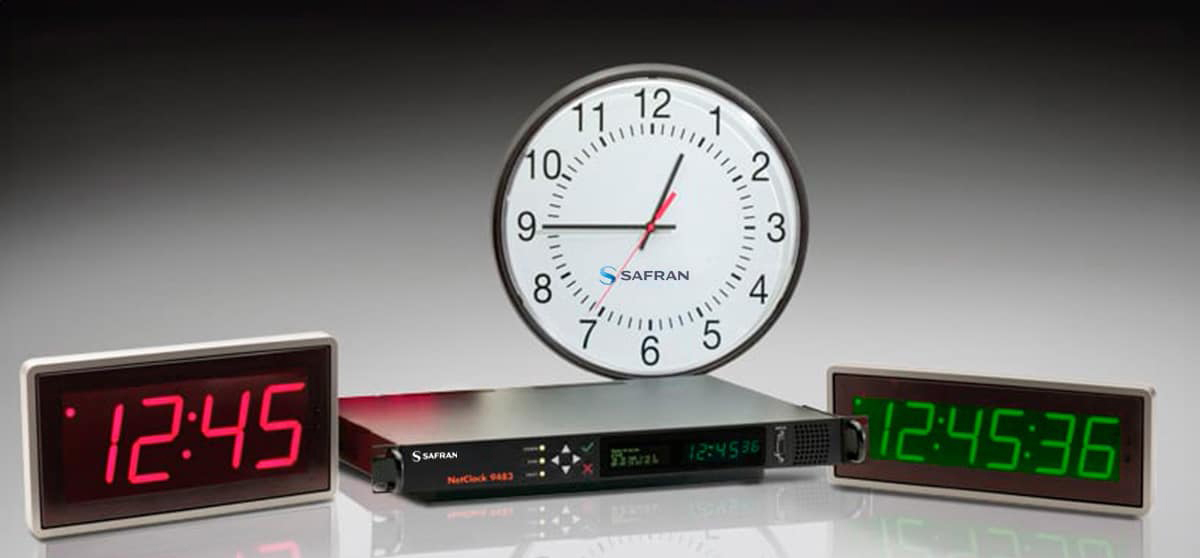
The main difference between wireless and wired clock systems is how they connect all the clocks within the system. As the name implies, the master clock of a wired system has a physical connection to each clock with a wire. Wireless master clocks, in contrast, send the proper time to their connected clocks using radio frequencies or internet signals.
Whether you're dealing with new construction, a renovation or just a couple of replacements, we can help you navigate the ins and outs of wired or wireless clock systems.
A master clock unit is a unit in the central clock system that controls all clocks connected to the master clock. It has GPS, so the time and secondary times are updated according to the global time. It receives the exact time via GPS and sets its time and other secondary times connected to it.
Furthermore, the main clock unit has a touch screen that makes it easy to use and special software to control the system. Central Time System communicates with RS485 serial communication protocol or wireless radio frequency.
Digital clocks in the synchronized clock system are designed to display hours, minutes and seconds. We also have a 6-digit, remote-controlled digital clock with stopwatch. It automatically receives time/date and other data from the master clock, and all clocks in the system work synchronously.
Digital clocks with PoE, wireless RF or RS485 communication options can be preferred as single-sided or double-sided.
Digital clocks are designed to display 7 segments, 4 digits, hours and minutes. We also have a 6-digit digital clock option with a stopwatch. It automatically receives time/date and other data from the main clock and all clocks in the system work synchronously.
Digital clocks with PoE, wireless RF or RS485 communication options can be preferred as single-sided or double-sided.
6-digit digital clocks are designed to display time, date, temperature and humidity information numerically. Optionally, a stopwatch and controller can also be added. Maximum importance was given to functional reliability and aesthetic appearance in their designs. Digital clocks are especially suitable for production facilities, companies, hospitals, universities, public institutions, etc. Suitable for use in areas.
Secondary clocks, which are part of the central time system, receive date and time information from the main clock unit. By adding a sensor to each clock, temperature and humidity information can also be displayed. Super bright 7 segment LED modules are used as display elements. Our digital clock models can be preferred as 57mm/100mm/150mm single-sided or double-sided. Single-sided digital clocks can be mounted on the wall and double-sided digital clocks can be mounted on the ceiling.
Analog clocks can be selected as single-sided or double-sided, with a diameter of 30 cm or 40 cm, depending on the application area. These clocks can be preferred as network (TCP/IP), RF wireless and RS485 wired. The cases of the clocks are made of ABS plastic. Analog clocks included in a system can be operated together or separately with digital secondary clocks. Secondary clocks can be selected as single-sided or double-sided, depending on the purpose of use.
Analog clocks can be selected as single-sided or double-sided, with a diameter of 30 cm or 40 cm, depending on the application area. These clocks can be preferred as network (TCP/IP), RF wireless and RS485 wired. The cases of the clocks are made of ABS plastic. Analog clocks included in a system can be operated together or separately with digital secondary clocks. Secondary clocks can be selected as single-sided or double-sided, depending on the purpose of use.
© 2024 Lektra Technology Services. All rights reserved.